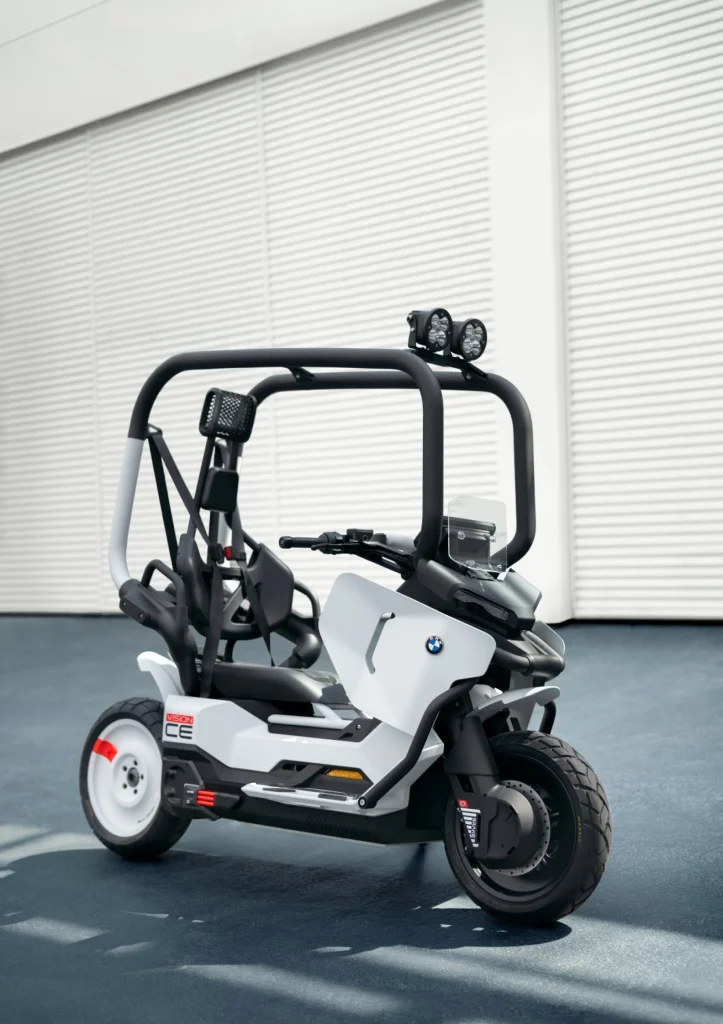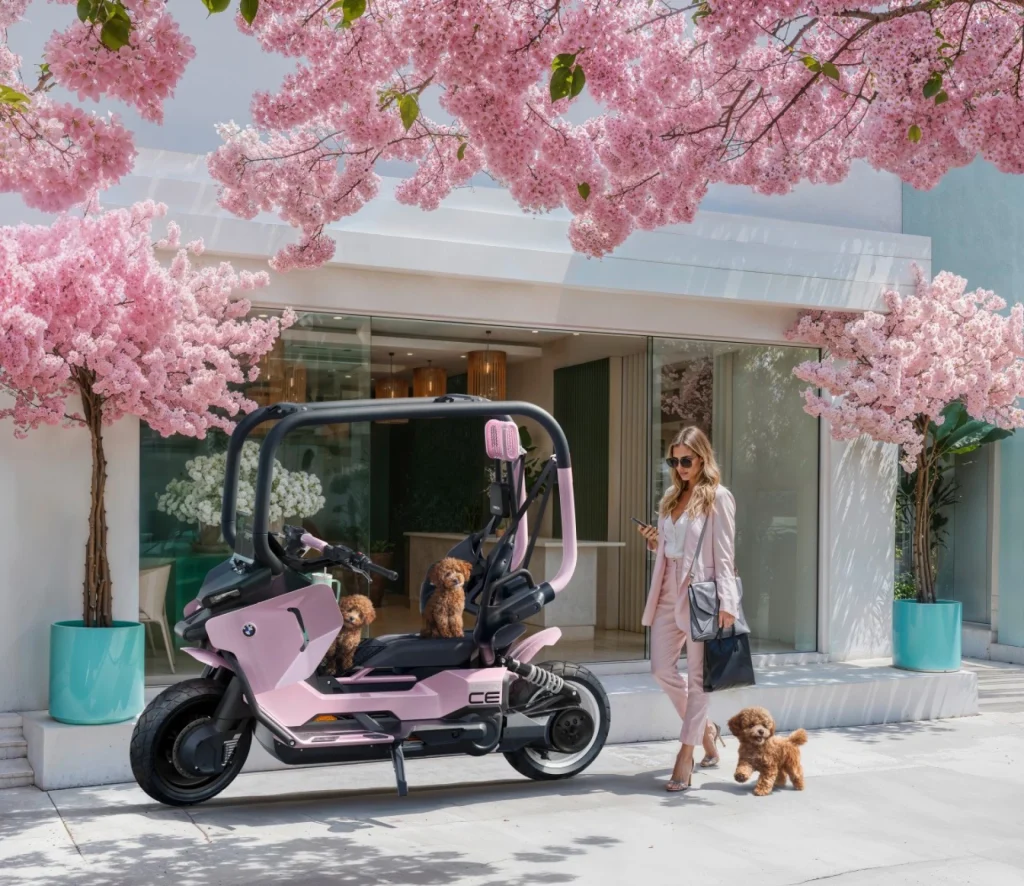Motorcycles and scooters have always lived in the liminal space between convenience and danger. They promise speed, freedom, and agility, but at the cost of helmets, leathers, and the ever-present awareness of risk. BMW Motorrad, however, is reimagining that equation with a new concept that could make the two-wheeled experience safer, more accessible, and infinitely more futuristic: the Vision CE self-balancing scooter.
At first glance, it doesn’t look like your average scooter. It comes with a seat-belt-equipped bench, a roll cage, and self-balancing technology that could one day eliminate the need for bulky protective gear altogether. BMW imagines a world where hopping on a scooter is as casual—and as safe—as stepping into a compact car. Forget the motorcycle license, the intimidating clutch, or the heavy helmet. Instead, this is mobility engineered for everyday life, designed to fit neatly into dense megacities like Tokyo, Shanghai, or Berlin, and still capable of hauling gear for a weekend escape beyond city limits.

The Vision CE hasn’t been fully specced yet, and BMW has kept quiet on the exact self-balancing tech inside. That silence hints that the concept is still some years away, but the company’s track record with bold ideas turning into real vehicles suggests this isn’t just a design exercise. Their CE 04 electric maxi scooter is already on the streets, and the CE 02 brings utility to urban commuters. The Vision CE feels like the natural next step—an evolution that blends electric mobility with safety systems advanced enough to rethink how we interact with two wheels.
This isn’t the first time BMW flirted with scooter safety. Back in 2000, they launched the BMW C1, a short-lived but intriguing machine with a roof canopy and seatbelts. It was unconventional, polarizing, and underpowered, but it hinted at a desire to merge the thrill of open-air mobility with the cocoon of car-like safety. The Vision CE updates that ambition with AI-driven stabilization, futuristic design, and the potential to democratize riding for a much larger audience.
The implications extend beyond scooters. Imagine fleets of self-balancing two-wheelers zipping across urban centers, not just as toys for enthusiasts but as reliable daily drivers. Delivery services could operate with fewer accidents. Ride-share networks could expand to include autonomous or semi-autonomous scooters. Commuters who once feared the risks of motorcycles might suddenly embrace them.
What’s most provocative here is the cultural shift BMW seems to be nudging: a future where riding a scooter no longer requires a rebellious streak, special gear, or advanced skill. Instead, it becomes mainstream—just another stylish, efficient, and safe way to move through the world.

BMW’s Vision CE isn’t simply about mobility. It’s about collapsing the barrier between motorcycles and cars, taking the best of both worlds and creating something entirely new. Whether it debuts in 2026 or later, one thing is clear: the scooter of tomorrow won’t just carry us. It will balance us, protect us, and maybe even change how we think about personal freedom on the road.
For further reading:


